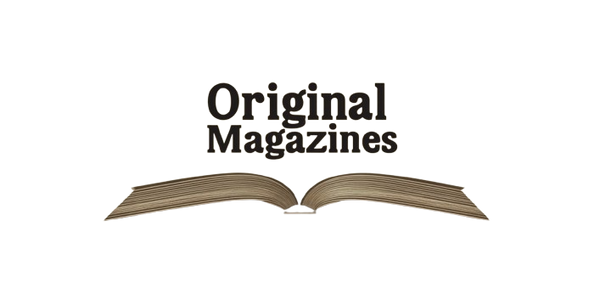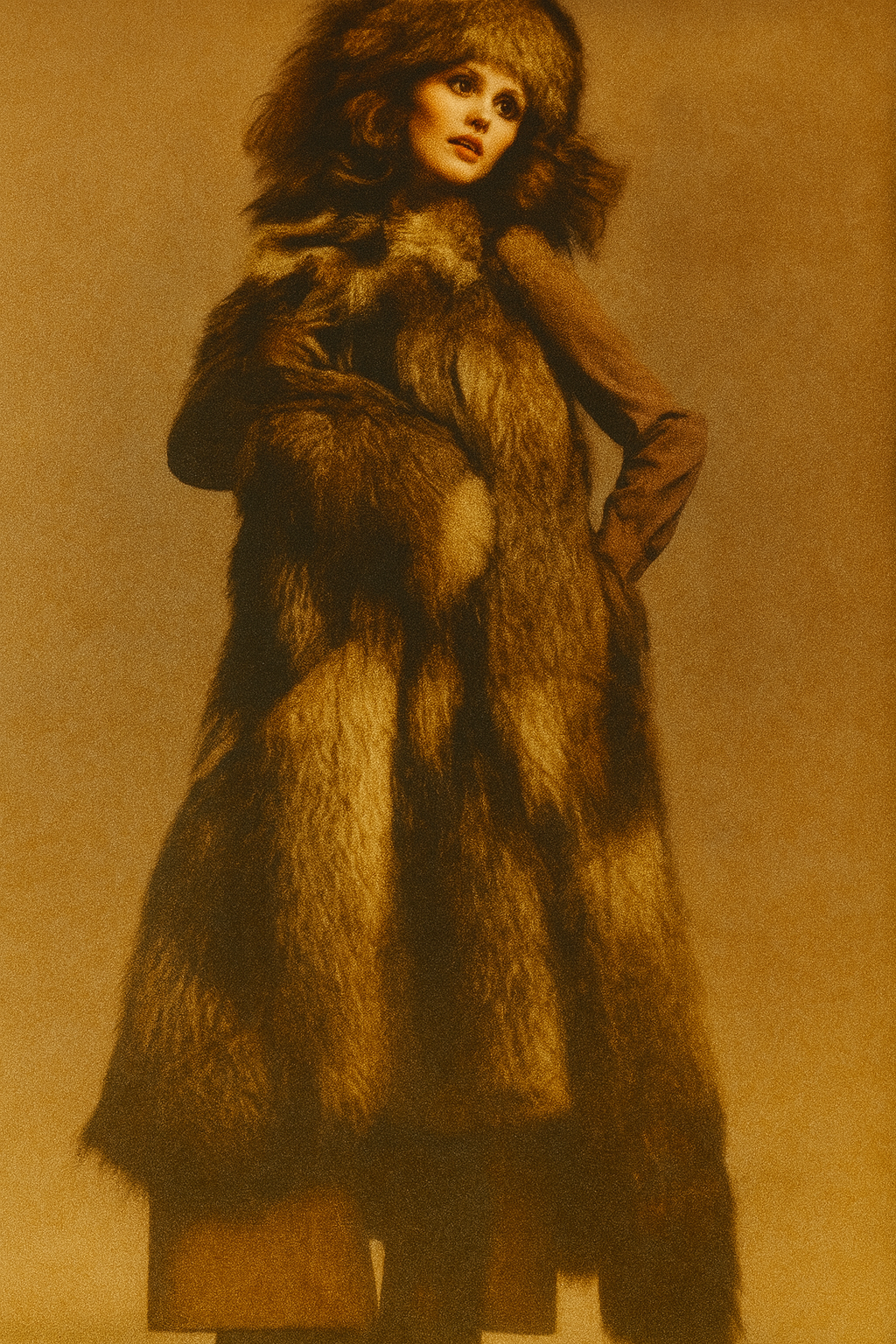Fashion at a Crossroads: Peasant Dresses, Power Suits, and the Choices Women Faced in 1970
When women picked up the August 15, 1970 issue of Vogue magazine, they held more than a glossy publication in their hands. They were stepping into a new decade of fashion—and into a world in transition. This particular issue carried a striking fashion feature boldly titled “Confused? This Is the Look” — a daring blend of black-and-white photography, commanding typography, and sharply contrasting styles that reflected the cultural and sartorial choices facing women at the dawn of the 1970s.
For readers, this was more than a style guide. It was a visual essay about identity. Vogue was telling women that fashion could be contradictory—folkloric and modern, practical and glamorous, tailored and free-flowing—and yet still powerful. The tension between “Confused?” and “Don’t Be” mirrored the broader uncertainty of 1970, a year defined by shifting gender roles, political upheaval, and a fashion industry no longer bound to a single rulebook.
The late 1960s had rewritten the rules of culture, and by 1970, fashion was feeling the impact.
-
Counterculture Influence: The youth movement had popularized peasant blouses, folkloric embroidery, and bohemian dresses. Vogue echoed this in its peasant dirndl spreads, patterned and romantic, paired with boots and headscarves.
-
Women’s Liberation: The feminist movement was reshaping expectations. Women were entering the workforce in larger numbers, demanding equality, and rejecting purely ornamental roles. Pantsuits, coats, and sharp tailoring in Vogue reflected this new confidence and independence.
-
Social and Political Turmoil: The Vietnam War, civil rights struggles, and economic unease cast a shadow over 1970. Fashion responded with both escapism—luxurious furs, exotic silhouettes—and practicality—daytime uniforms, structured coats.
This issue of Vogue magazine August 1970 was significant because it captured the crossroads moment of style. Women were no longer told there was one “correct” way to dress. Instead, they were presented with choices—suits, coats, dresses, pants—and encouraged to own their individuality.
The Cover and Its Authority
The August 1970 cover was striking: a model photographed in sleek black-and-white, embodying a modern, pared-down beauty. Unlike the colorful psychedelia of late-1960s fashion photography, this cover projected clarity, focus, and authority—exactly the mood that defined the inside editorial.
The Editorial Spread
Across multiple spreads, the words screamed in bold type:
-
“Confused this is the LOOK.”
-
“Don’t Be.”
-
“This is the suit: it’s big news this year.”
-
“This is the coat: it swings over everything.”
Each statement was paired with dramatic images: models in wide-brim hats, suede suits, flowing capes, fur coats, and knee-high boots. The editorial’s structure set up opposites—peasant dress vs. skirt-and-top, evening pants vs. daytime pants, suit vs. coat—forcing the reader to confront the abundance of choices in modern fashion.
Designers and Stores Named
The captions named names, grounding the fantasy in reality:
-
Oscar de la Renta (monkey coats, midcoats).
-
Phillip Sills (suede suits).
-
Herbert Levine (boots).
-
Lord & Taylor, Saks Fifth Avenue, Bonwit Teller, Bendel’s, Neiman-Marcus, Jacobson’s, I. Magnin — the department stores that made high fashion accessible to American readers.
By weaving design houses with retail outlets, Vogue reminded its audience that fashion wasn’t abstract—it was available, attainable, and ready to wear.
The Power of Black-and-White Photography
Shot in sharp monochrome, the photography emphasized silhouettes and textures: the swing of a coat, the drape of a dirndl, the shine of leather. Boots anchored nearly every look. The lack of color heightened the contrasts and gave the feature a timeless modernism, reinforcing Vogue’s identity as both arbiter of taste and cultural commentator.
-
Peasant Dirndl Dresses – Romantic, folkloric styles reflecting counterculture trends.
-
Daytime Separates – Skirt-and-top combinations promoted as practical “uniforms.”
-
Evening Pants – Breaking with tradition, pants were presented as glamorous nightwear.
-
Daytime Pants – Wide-legged trousers paired with coats and capes, symbolizing freedom and ease.
-
The Suit – Declared the “big news this year,” signaling women’s growing embrace of power dressing.
-
The Coat – “The coat that swings over everything” emphasized motion and versatility.
-
Boots – The essential footwear of 1970, grounding every outfit.
-
Fur Drama – A companion spread proclaimed: “Oh, to be in autumn now that furs are here,” with Russian-inspired luxury furs.
-
Oscar de la Renta’s Monkey Coats – Exotic and statement-making, emblematic of high fashion’s flair for the dramatic.
-
Retail Context – Vogue’s references to American department stores made the trends both aspirational and accessible.
Together, these elements created a portrait of fashion not as a single trend, but as a menu of identities women could choose from.
Today, collectible Vogue magazines from the 1970s are highly sought after, and the August 15, 1970 issue holds special value:
-
Historical Timing – It documents the very start of the decade, when fashion was moving beyond 1960s mod into eclectic, layered 1970s style.
-
Groundbreaking Editorial – The “Confused? Don’t Be” feature is one of the era’s most iconic examples of Vogue blending typography, photography, and commentary.
-
Design Names – Oscar de la Renta, Phillip Sills, and Herbert Levine make this issue valuable to fashion historians.
-
Cultural Resonance – The editorial captures the uncertainty and freedom of 1970—an exact reflection of its cultural moment.
-
Rarity – Vintage issues in good condition are increasingly scarce. Unlike books, they were not meant to last; surviving copies are genuine artifacts.
For collectors, this issue is more than a magazine—it’s a piece of cultural history, documenting a time when fashion mirrored the choices and contradictions of a generation.
Readers still turn to vintage Vogue magazines because they are living time capsules. The August 1970 issue resonates today because its themes remain relevant:
-
Fashion as choice — no single rulebook, but multiple paths.
-
The balance between practicality and aspiration — skirts for day, pants for night, coats for movement, furs for drama.
-
The interplay of culture and clothing — feminism, youth culture, and economic uncertainty all reflected in style.
Unlike digital media that vanishes overnight, original magazines endure. They carry the ads, the typography, the photography, and the cultural context that defined their moment.
If you’re intrigued by the cultural and design history documented in issues like the Vogue magazine August 1970, you’ll find even more treasures in our collection. Each issue is not just a style guide—it’s a piece of history.
👉 Browse our full collection of original Vogue magazines here: Original Vogue Collection.
From the 1920s through the 1990s, each decade of Vogue offers a direct link to the culture of its time—capturing how people dressed, what they desired, and how they saw themselves.
The August 15, 1970 issue of Vogue magazine was more than a guide to what to wear. Its feature “Confused? This Is the Look” dramatized the choices facing women at the dawn of a new decade. Peasant dresses, pants for day and night, swinging coats, and power suits all coexisted, reflecting a culture in flux and a generation redefining itself.
Like all collectible Vogue magazines, this issue is not simply about fashion. It is an artifact of cultural history—a printed time capsule that shows how women in 1970 navigated identity, aspiration, and style. For today’s readers and collectors, it remains a reminder that fashion has always been about more than clothes. It is about choice, confidence, and the freedom to define oneself.

